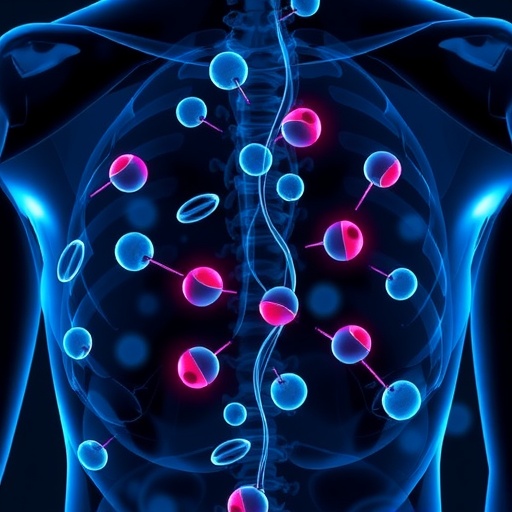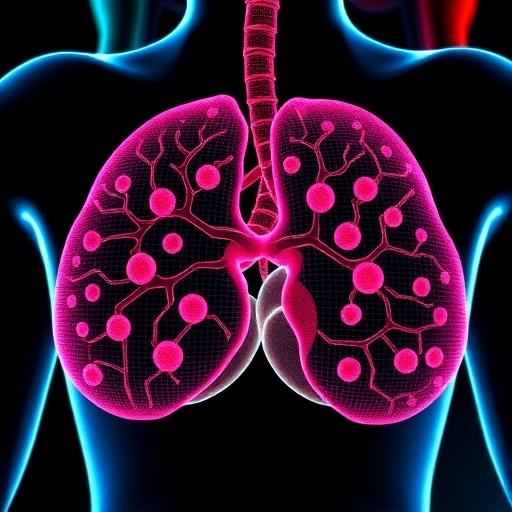Nasal polyps – soft, grape-like outgrowths that can appear in the nasal passages and sinuses – can be chronic and relentless. Although noncancerous, these outgrowths can grow large enough to block the nose and sinuses, leading to discomfort, breathing problems and infections. Nasal polyps can be surgically removed, but may grow back, sometimes in a matter of days. Although most patients are happy to be rid of their polyps, for researchers, that tissue is precious: It may hold critical clues about intense, allergic inflammation. Investigators from Brigham and Women's Hospital, along with collaborators from the Broad Institute and MIT, have used some of the most advanced sequencing technology to peer into nasal polyps, gleaning new insights not only into this condition but also the severe form of inflammation that may lead to other disorders, such as asthma, allergic rhinitis and allergic eczema. The team's findings are published Aug. 22 online in Nature.
"For our patients, one of the most frustrating things about chronic, allergic conditions is that we have no cure. Surgery can relieve discomfort for those with nasal polyps, but in many cases the effect is only temporary," said co-corresponding author Nora Barrett, MD, a physician in the Division of Rheumatology, Immunology, and Allergy at BWH. "My group's goal is to understand why the inflammatory process persists once it begins and to uncover the cause of these conditions."
Barrett and colleagues obtained samples from 12 patients with nasal polyps or other sinus conditions, for a total collection of 18,036 cells. They compared these to nasal scrapings from healthy individuals. Barrett and her team member Dan Dwyer, PhD, partnered with Alex K. Shalek, PhD, of the Broad Institute, Ragon and MIT, and his postdoctoral fellow Jose Ordovas-Montanes, PhD, to use massively-parallel, single-cell RNA sequencing – a technique that allows investigators to determine genes turned on in each cell recovered. Rather than focusing on just one kind of suspected cell, they used this approach to look at every cell type found in harvested samples.
What they found surprised them. One of the most striking findings the researchers reported was that epithelial progenitor cells, stem-like cells which give rise to the cells that line the airways, had been completely remodeled in the polyp samples. And they had been permanently altered. In fact, even when removed from the tissue and grown in the lab, the resulting cells showed marked genetic differences.
"We found that stem-like epithelial cells expressed an aberrant program," said Barrett. "To a dramatic extent, inflammation had changed the basic tissue architecture at the genetic level."
The Nature publication offers a global, cellular map of inflamed tissue for what is known as type 2 inflammation – a severe form of inflammation that involves immune cells that have gone rogue, triggering a cascade of immune action. The map points to many pathways that have been altered, and Barrett and colleagues are working through these to identify which ones may be driving inflammation and which ones may be resulting from the inflammatory process. The research team also tested a monoclonal antibody that helped restore normal genetic activity – suggesting that it may be possible to develop therapies in the future to restore a normal balance to cells that have been altered through inflammation.
The team also hopes to use the new information to develop a genetic signature that would allow clinicians to take a swab of nasal mucosa to test for lung conditions. Using the new map to chart the key characteristics of type 2 inflammation could yield the tools needed to predict disease states and, potentially, direct targeted therapy.
###
Funding for this work was provided by the Jeff and Penny Vinik Center for Allergic Disease Research, the Searle Scholars Program, the Beckman Young Investigator Program, the Pew Stewart Scholars, a Sloan Fellowship in Chemistry, NIH grants (1DP2OD020839, 2U19AI089992, 1U54CA217377, P01AI039671, 5U24AI118672, 2RM1HG006193, 1R33CA202820, 2R01HL095791, 1R01AI138546, 1R01HL126554, 1R01DA046277, 2R01HL095791), Bill and Melinda Gates Foundation grants (OPP1139972 and BMGF OPP1116944)? NIH R01HL120952, Steven and Judy Kaye Young Innovators Award, NIH R01HL128241, NIH U19AI095219, T32AI007306, NIH AADCRC Opportunity Fund Award U19AI070535, NIH K23AI118804, NIH 2R01GM08187109, the Koch Institute Support (core) Grant P30CA14051 from the NCI, and Ragon Institute NIH-funded Centers for AIDS Research (P30 AI060354, Harvard University Center for AIDS Research), supported by NIH cofounding and participating Institutes and Centers: NIAID, NCI, NICHD, NHLBI, NIDA, NIMH, NIA, FIC, and the HHMI Damon Runyon Cancer Research Foundation Fellowship (DRG227416).
Brigham and Women's Hospital (BWH) is a 793-bed nonprofit teaching affiliate of Harvard Medical School and a founding member of Partners HealthCare. BWH has more than 4.2 million annual patient visits and nearly 46,000 inpatient stays, is the largest birthing center in Massachusetts and employs nearly 16,000 people. The Brigham's medical preeminence dates back to 1832, and today that rich history in clinical care is coupled with its national leadership in patient care, quality improvement and patient safety initiatives, and its dedication to research, innovation, community engagement and educating and training the next generation of health care professionals. Through investigation and discovery conducted at its Brigham Research Institute (BRI), BWH is an international leader in basic, clinical and translational research on human diseases, more than 3,000 researchers, including physician-investigators and renowned biomedical scientists and faculty supported by nearly $666 million in funding. For the last 25 years, BWH ranked second in research funding from the National Institutes of Health (NIH) among independent hospitals. BWH is also home to major landmark epidemiologic population studies, including the Nurses' and Physicians' Health Studies and the Women's Health Initiative as well as the TIMI Study Group, one of the premier cardiovascular clinical trials groups. For more information, resources and to follow us on social media, please visit BWH's online newsroom.
Media Contact
Haley Bridger
[email protected]
617-525-6383
@BrighamWomens
http://www.brighamandwomens.org




